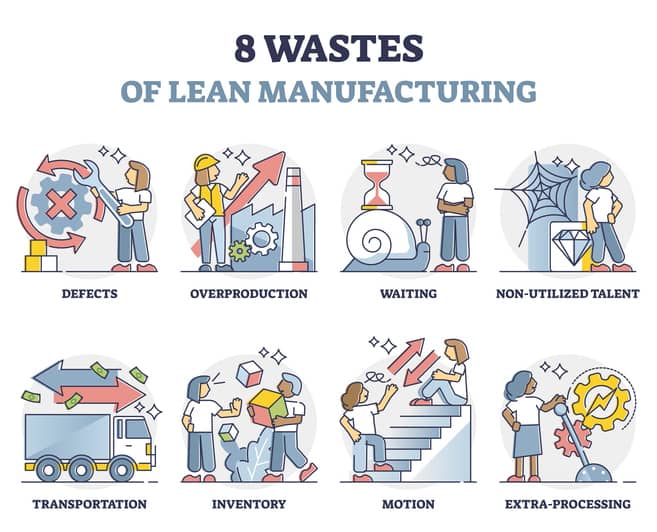 What is Lean Manufacturing?
What is Lean Manufacturing?
Lean manufacturing is the concept of using fewer resources to create more value for customers; in other words, maximizing the customer value and minimizing waste. This philosophy and system aims to cut out as much waste as possible during the manufacturing process.
In Lean manufacturing terms, “waste” means anything the customer does not want to pay for or that does not add to the customer’s value. While many believe that the Lean process is solely for manufacturing, the philosophy can also apply to business practices or any other processes.
“Lean” is as much a way of acting and thinking for the benefit of an entire organization as it is for reducing costs, which is why its principles also work well in areas such as healthcare and government.
History of Lean Manufacturing
The 1913 Model T Ford and the American supermarket industry were the key inspirations for Japanese Toyota executive Taiichi Ohno (1912-1990) when he developed the concept of Lean and identified the seven types of waste. In contrast to most manufacturing processes at the time, Henry Ford designed his Model T assembly line so that all the processes occurred in the same sequence as the building of the car. Previously, these processes tended to be grouped together in a batch manufacturing approach. Ohno also observed that the stocking and restocking methods of the American supermarket industry were clearly superior to the methods employed in heavier industry.
Ohno put his Lean Manufacturing ideas into practice in Japan right after World War II. In the 1980s, a number of Japanese manufacturing plants were built in the United States, bringing with them the Lean principles that had been so successful in Japan. Because of the success of these Japanese plants in the States, American manufacturers saw that Lean practices were not exclusive to Japan; they could be successful anywhere.
The Seven Original Types of Waste
Identifying waste in the workplace means looking at the concept through an entirely new lens. Waste in not just scrap and rework; it is anything that does not add to customer value. Reframing the definition of waste is the first important step when implementing Lean practices. The seven types of waste as originally identified by Ohno are:
- Excess inventory
- Awkward or unnecessary operator motions
- Unnecessary processing due to unclear customer requirements
- Over-production of the product
- Wasteful conveyance practices
- Corrections due to manufacturing errors
- Unacceptable waiting times between operations
The waste of unused employee talent has since been added to form the eight wastes of Lean.
How can Lean Manufacturing Help a Business Save Money?
There are many ways Lean practices can save money. By moving from batch production to a one-piece flow, the inventory turns will increase and the Work in Process (WIP) inventory will be reduced. The money saved here can reduce debt, add to the bottom line profit and allow for reinvestment that will grow the business. Lean manufacturing often leads to a 35-50% reduction in floor space, allowing for business expansion or perhaps eliminating the need for expanding the plant.
Training and Education Opportunities
The Toyota Motor Manufacturing company, the pioneer of Lean Manufacturing, willingly shares its success story with any interested parties, offering tours of the Georgetown, Kentucky, facilities. They also conduct seminars that include an overview of Lean and how it is applied as well as a panel discussion with team members and team leaders.
For those seeking even more information, several universities teach Lean Manufacturing, and there are many excellent books available that go into Lean as well.



